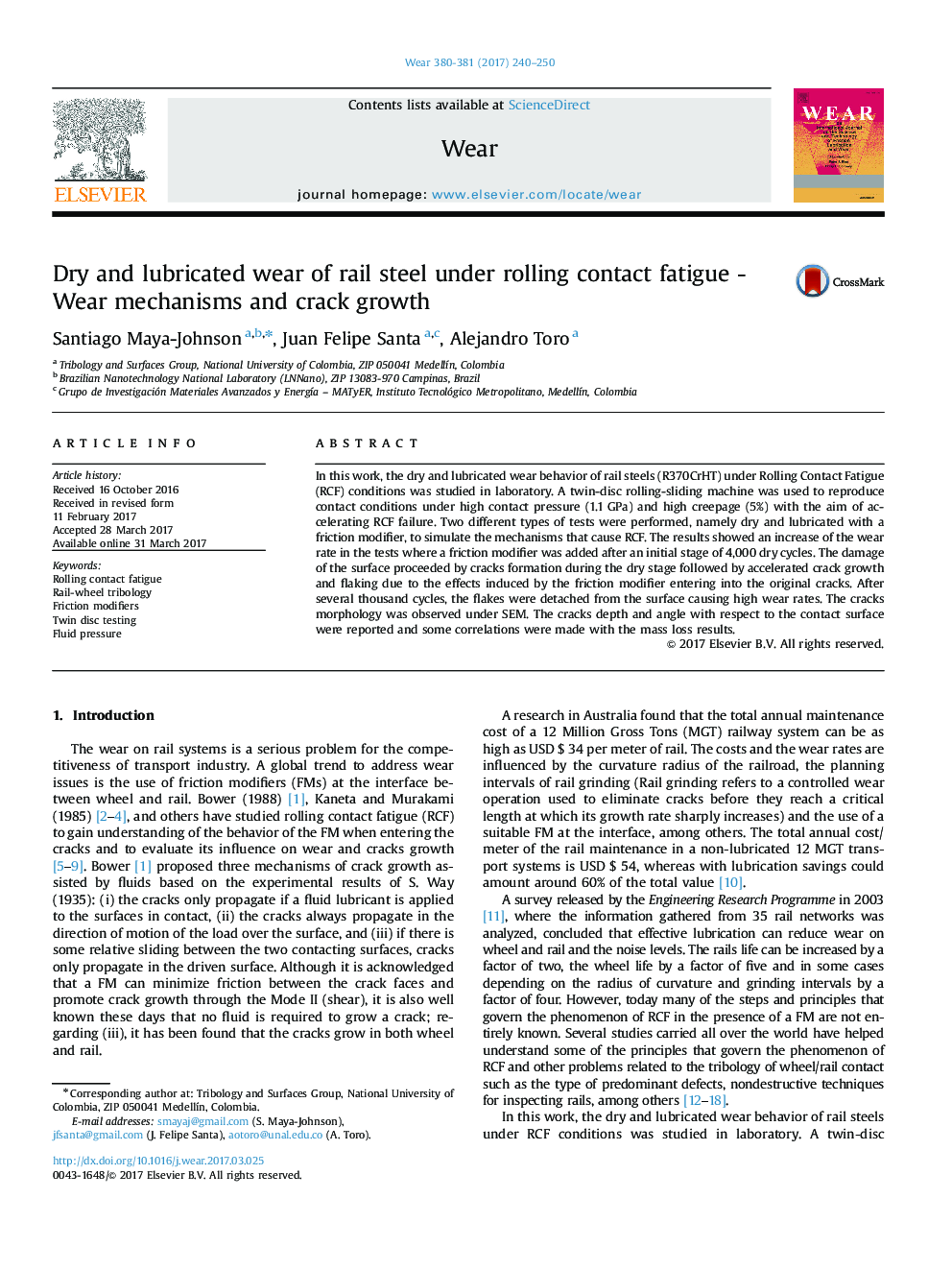| Article ID | Journal | Published Year | Pages | File Type |
|---|---|---|---|---|
| 4986508 | Wear | 2017 | 11 Pages |
Abstract
In this work, the dry and lubricated wear behavior of rail steels (R370CrHT) under Rolling Contact Fatigue (RCF) conditions was studied in laboratory. A twin-disc rolling-sliding machine was used to reproduce contact conditions under high contact pressure (1.1Â GPa) and high creepage (5%) with the aim of accelerating RCF failure. Two different types of tests were performed, namely dry and lubricated with a friction modifier, to simulate the mechanisms that cause RCF. The results showed an increase of the wear rate in the tests where a friction modifier was added after an initial stage of 4,000 dry cycles. The damage of the surface proceeded by cracks formation during the dry stage followed by accelerated crack growth and flaking due to the effects induced by the friction modifier entering into the original cracks. After several thousand cycles, the flakes were detached from the surface causing high wear rates. The cracks morphology was observed under SEM. The cracks depth and angle with respect to the contact surface were reported and some correlations were made with the mass loss results.
Related Topics
Physical Sciences and Engineering
Chemical Engineering
Colloid and Surface Chemistry
Authors
Santiago Maya-Johnson, Juan Felipe Santa, Alejandro Toro,
